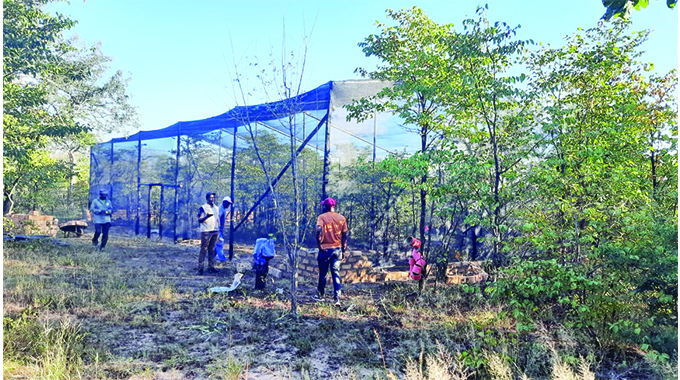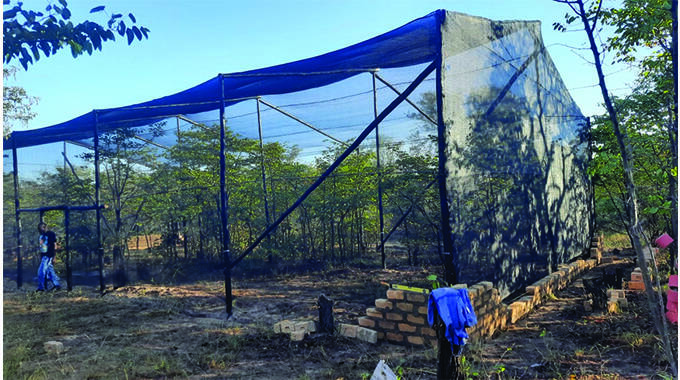Forestry Commission intervenes to save mopane worms

Sukulwenkosi Dube-Matutu, Matabeleland South Bureau Chief
IN a bid to save an age-old delicacy of creepy-crawlies from extinction, villagers in Matabeleland South Province have embarked on a programme to repopulate mopane worms.
Named after their primary food – mopane tree leaves – Gonimbrasia belina is a species of emperor moth found in warmer parts of Southern Africa.
The large edible caterpillar, known locally as amacimbi, can be snacked on dry, crispy fried or cooked in a sauce of choice.
Traditionally, mopane worms were harvested in December and April each year. However, due to overharvesting, uncontrolled cutting of trees, harsh weather conditions and pests, mopane worms have been crawling out of the menu with some areas going for years without producing them.
To save the delicacy and the environment, the Forestry Commission has partnered various entities to set up mopane worm-rearing facilities in Matabeleland South Province.
In the rearing facilities, mopane worms will be housed in enclosed areas with mopane trees to help them complete their life cycle.
Two mopane worm-rearing facilities have been set up in Gwanda, with one established in Ward 15 through the assistance of Southern Alliance For Indigenous Resources (SAFIRE). The other facility is in Ward 21 and was established under the Government-led Insects for Nutrition Programme.

One of the mopane worm-rearing facilities in Gwanda
“We grew up knowing that our area was an amacimbi area. Every April and December we knew that we would be harvesting them. Some, we would eat and some we would sell. In the past there wasn’t that much selling, but then we started having people coming from different areas to harvest amacimbi.
“The more people came in to harvest amacimbi the more they became scarce. People became desperate to the extent that they would even harvest the small ones, leaving the trees bare. Gradually, the population of the mopane worms declined up to an extent where they started missing seasons. We have mopane trees in our area, but we no longer have amacimbi every season,” said Mr Sibanda.
Another villager, Ms Sithatshisiwe Nyathi, said they have received training on sustainable harvesting of mopane worms. She said the rearing facility will help them run a viable mopane worm production project without the interference of people that are not concerned about their sustainability.
Ms Nyathi said, as a community, they understood the importance of protecting the mopane worms as this will also help future generations.
She said for locals it is not only about getting income, but also preserving natural resources.
Ms Nyathi said villagers wished to increase the population of mopane worms throughout the entire community. She said there was, however, need for authorities to set up restrictive measures on harvesting.
“Our desire is that from this rearing facility we will manage to produce mopane worms that will be enough to populate our area. But then when that happens, authorities should enforce regulations that will control the harvesting process. We can’t have people coming from other areas to destroy our natural resources that we are working so hard to preserve,” she said.
Forestry Commission Matabeleland South provincial manager, Mr Bekezela Tshuma said they hoped to replicate the mopane worm rearing facilities in as many villages as possible.
He said this will help to return production of mopane worms in areas where they had become extinct. Mr Tshuma said the edible caterpillar plays a crucial role in enhancing food and nutrition security within households.
“The availability of mopane worms is under threat due to human and environmental factors. We want to preserve and ensure their existence through these rearing facilities. We put pupae in pupation beds where they can hibernate and come out as moths which will then lay eggs that become mopane worms. If a lot of mopane worms are produced within the facility, then we can distribute them in the bush to enhance their production.
“This will guarantee their continuous availability as they will be protected from predators. We will also be able to monitor the harvesting process at the facility to ensure that villagers leave seed. We will also distribute some mopane worms in areas where they have now become extinct,” he said.
Mr Tshuma said some areas no longer have mopane worms as people had harvested even the small ones which had to remain for continuous production. He said controlled harvesting of mopane worms could help in their sustainability.
@DubeMatutu












Comments